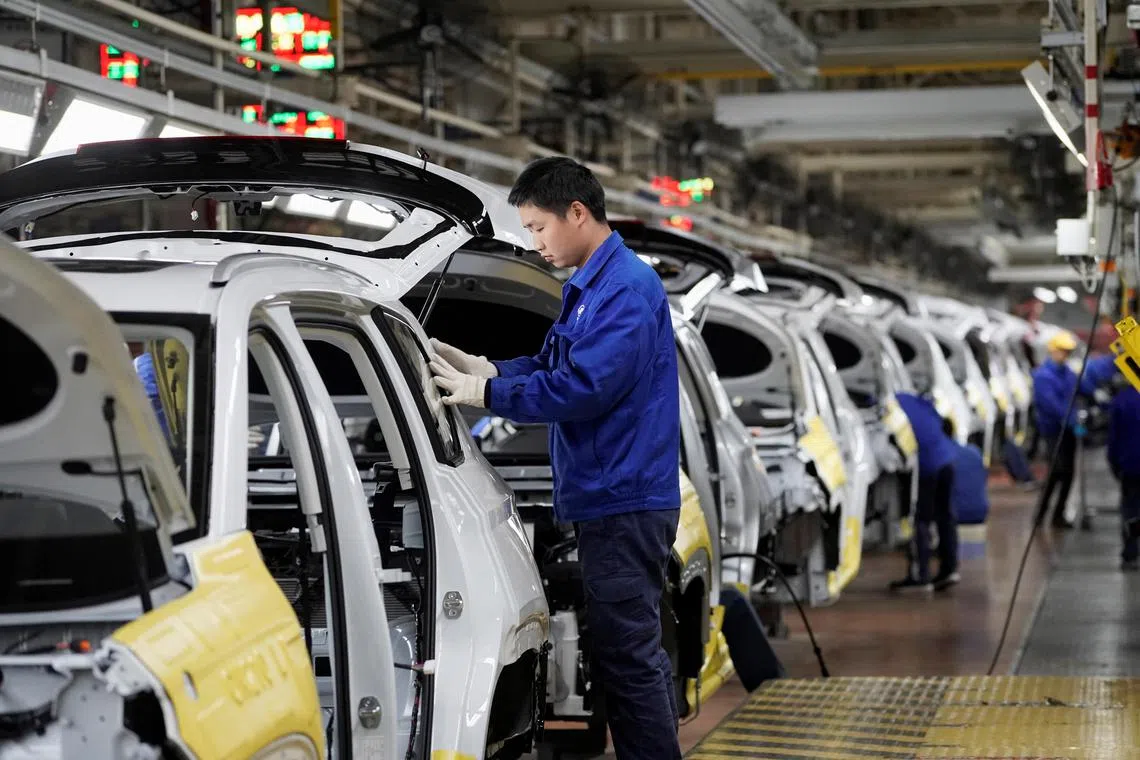GM cuts China jobs as it resets in world’s biggest car market
Sign up now: Get ST's newsletters delivered to your inbox

General Motors is cutting staff in Chinese market-related departments, including research and development.
PHOTO: REUTERS
Follow topic:
BEIJING - General Motors (GM) has been laying off staff in China and will soon meet local partner SAIC Motor to plan a larger structural overhaul of its operations there, a recognition the Detroit automaker is unlikely to see its sales return to 2017 peak levels.
GM is cutting staff in Chinese market-related departments, including research and development, according to people familiar with the matter.
In the coming weeks, GM and SAIC will discuss possible capacity cuts as part of a strategic redirection for American nameplates sold in China.
The reassessment represents a major shift in strategy for GM, which earned billions of dollars in China as recently as 2018. The automaker is pulling back as many foreign brands are struggling with a profusion of local competitors in the world’s largest car market, which is now facing massive overcapacity.
The reset involves a shift to producing electric vehicles (EVs), focusing on more upscale models and importing premium vehicles, the sources said. Reductions in factory capacity and additional job cuts are under consideration, the sources added.
GM will continue to make less costly vehicles and EVs locally in a joint venture with SAIC and Wuling Motors, some of which will be exported from China.
The auto manufacturer said in a recent securities filing that China’s domestic automakers are prioritising market-share gains over profits, making it difficult to maintain sales volumes.
As a result, GM is working with local partners to overhaul its Chinese operations, resulting in “an increased likelihood of recording future charges, which could be material, if losses continue in the near term”, it said.
The goal is to put the SAIC-GM partnership – which makes Buick, Cadillac and Chevrolet brand vehicles – in a stronger financial position so that it can fund its own operations and vehicle development programmes, the sources said.
The cuts required will be commensurate with lowered sales expectations in an effort to stem the flow of red ink, they added.
A second partnership in China, known as SAIC-GM-Wuling Automobile, makes small and inexpensive vehicles. Its sales have held up better by selling more affordable EVs like the Hongguang Mini EV. Wuling is controlled by state-backed Guangxi Automobile Group.
In the most recent quarter ended June 30, GM lost US$104 million (S$137.7 million) on its Chinese business, part of a first-half loss totalling US$210 million.
GM is one of the longest-tenured foreign automotive brands to manufacture locally in China, becoming only the second foreign brand to gain permission to do so in 1997 after Volkswagen. Its sales peaked at four million in 2017 and fell by almost half to 2.1 million in 2023.
In the latest quarter, GM’s China sales plunged 29 per cent to 373,000 vehicles, with all of its US brands in steep decline, including Buick, Cadillac and Chevrolet.
Vehicles made by SAIC-GM-Wuling Automobile fell just 12 per cent in the period.
GM sees that partnership as having better prospects because it makes the type of compact EVs in China for which demand is still increasing.
More troubled is the separate partnership between GM and SAIC, which builds US-branded vehicles locally that target the saturated middle of the market. That venture will likely shift its focus to more premium vehicles targeting upscale buyers. BLOOMBERG

